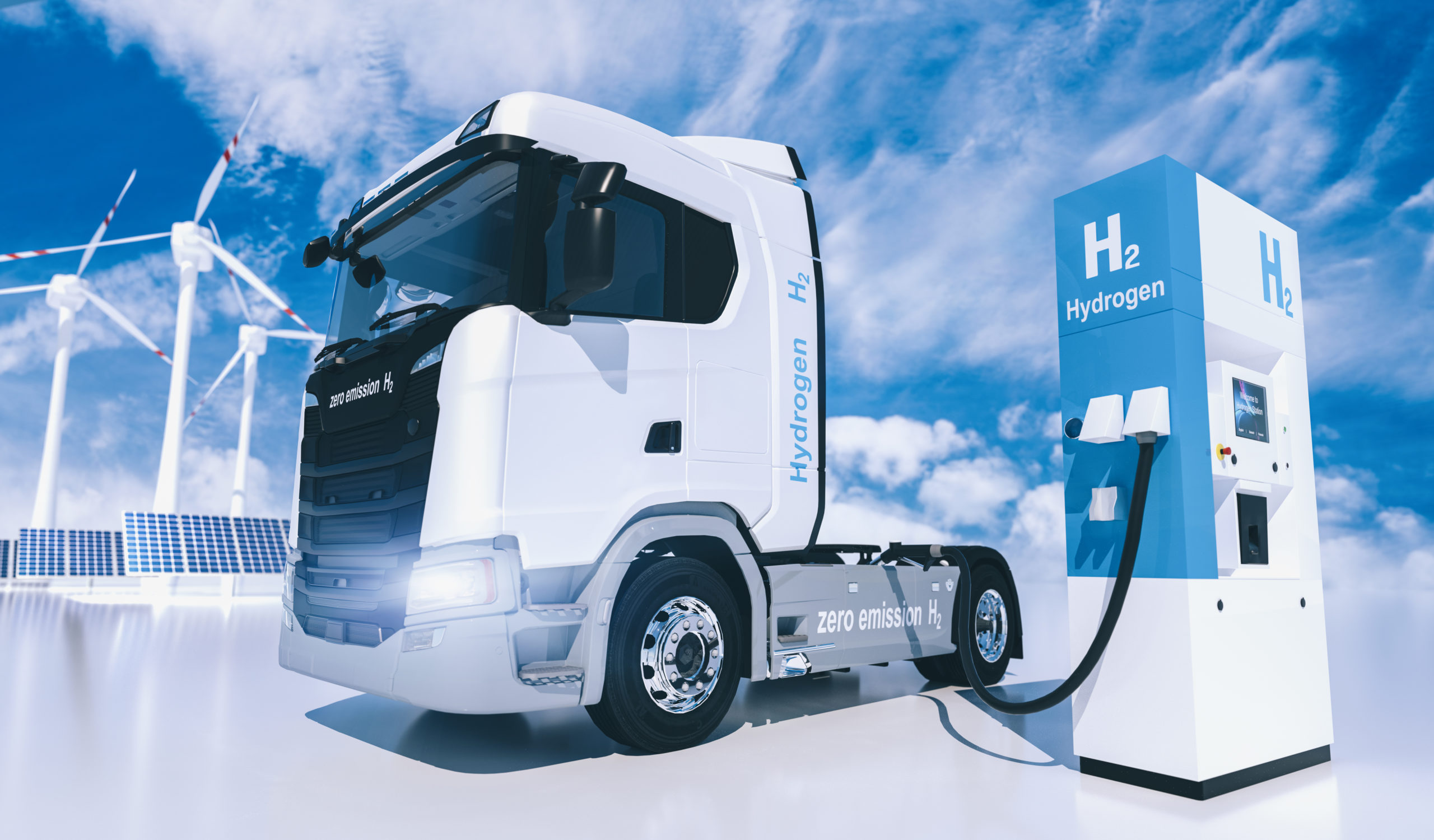
On June 5, 2023, the US Department of Energy (DOE) published its US National Clean Hydrogen Strategy and Roadmap. This report addresses the Infrastructure Investment and Jobs Act (IIJA) requirement that the DOE “develop a technologically and economically feasible national strategy and roadmap to facilitate widespread production, processing, delivery, storage, and use of clean hydrogen.” Notably, in developing this strategy, Congress instructed the DOE to focus on clean hydrogen production and use from a variety of sources—including natural gas, coal, renewable energy, nuclear energy, and biomass.
Hydrogen plays a key role in the United States by providing energy security, economic value, and environmental benefits. Development of a clean hydrogen economy has seen unprecedented momentum in the past few years, particularly after the IIJA appropriated $9.5 billion to the DOE for clean hydrogen in 2021. This Strategy and Roadmap report provides a snapshot of hydrogen development in the United States today, identifies key opportunities for expansion across multiple sectors, evaluates future demand scenarios, and presents a framework for achieving large-scale production of clean hydrogen moving forward. Through the report, the DOE illustrates how clean hydrogen will contribute to national decarbonization goals and sets forth “concrete targets, market-driven metrics, and tangible actions to measure success across sectors.”
The Strategy and Roadmap was developed with contributions across multiple agencies and the Administration. The report was released for public comment in September of 2022, and the final version incorporates industry and stakeholder feedback from workshops and listening sessions, written comments, and ongoing engagement.
DOE prioritized three key strategies throughout the Strategy and Roadmap:
- Target strategic, high-impact uses for clean hydrogen, particularly in hard-to-decarbonize sectors (emphasizing the industrial sector, heavy-duty transportation, and long-duration energy storage);
- Reduce the produced and delivered cost of clean hydrogen through initiatives like the Hydrogen Energy Earthshot; and
- Focus on regional networks by co-locating large-scale clean hydrogen production and end use, particularly through investing in and scaling Regional Clean Hydrogen Hubs.
The report is organized into three sections: National Decarbonization Goals, Strategies to Enable the Benefits of Clean Hydrogen, and Guiding Principles and National Actions.
National Decarbonization Goals
This section provides a snapshot of clean hydrogen in the United States, illustrated within the context of the broader goals set by the United States to address climate change. These goals include a 50 to 52 percent reduction in emissions (relative to 2005) by 2030, 100 percent carbon emission-free electricity by 2035, and net-zero greenhouse gas emissions by 2050. In providing a backdrop for the strategies and actions identified in the remainder of the report, the DOE outlines a broad-level overview of current production and utilization, emerging opportunities and demand, and prominent challenges in the clean hydrogen economy.
Production and Utilization: The Strategy and Roadmap characterizes hydrogen as a “versatile energy carrier and chemical feedstock, offer[ing] advantages that can also leverage all our Nation’s energy resources—renewables, nuclear, and fossil fuels with carbon capture and storage (CCS).” Originally concentrated in the industrial sector, particularly for petroleum and fertilizer production, hydrogen use is spreading to more diversified applications. States, regions, and industries are pursuing clean hydrogen projects at an accelerating pace. The report highlights the variety of technologies and pathways emerging to produce clean hydrogen, including water-splitting by renewable energy (green hydrogen) or nuclear power (pink hydrogen), CCS processes involving fossil fuels (blue hydrogen), and biomass (brown hydrogen) or waste feedstocks.
Opportunity and Demand: Initial utilization of clean hydrogen is expected to target industries that “currently rely on conventional natural gas to hydrogen technologies.” The first large-scale deployments likely will target industries with established supply chains and economies of scale (e.g., ammonia production and the petrochemical industry). The Strategy and Roadmap identifies four categories of current and emerging opportunities for hydrogen: Industrial Feedstocks, Transportation, Power Generation & Energy Storage, and Buildings and Hydrogen Blending. It evaluates scenario and tipping-point analyses for 2030, 2040, and 2050. These analyses, which assume cost competitiveness, indicate that demand for hydrogen production may increase from “nearly zero today to as much as 20 million metric tonnes (MMT) per year by 2030, 20 MMT per year by 2040, and 50 MMT per year by 2050.” By 2050, this increase in hydrogen production and utilization could decrease approximately 10 percent of total GHG emissions relative to 2005 levels.
Challenges: The DOE’s demand estimates are based on models that assume cost competitiveness. DOE emphasizes that over time, demand growth may reduce the delivered cost of hydrogen by “spur[ring] the deployment of large-scale distribution infrastructure.” Similarly, the production costs of hydrogen may be offset by funding and incentives like the clean hydrogen production tax credit included in the Inflation Reduction Act, which the DOE estimates will “accelerate economies of scale [and make] the threshold hydrogen price within reach for more applications.”
Though cost competitiveness may be attainable, “stakeholder input continuously identifies the cost of clean hydrogen as a key challenge for achieving economic scale.” Other challenges to achieving the benefits of clean hydrogen include supply base availability, manufacturing at scale, securing long-term offtake, price transparency, permitting requirements, hydrogen storage safety, durability and reliability, and a lack of cost-effective midstream distribution infrastructure.
Strategies To Enable the Benefits of Clean Hydrogen
DOE’s first prioritized strategy is to target strategic, high-impact end uses in sectors that are hard to decarbonize and lack competing alternatives. This strategy will prioritize industries that can build momentum through established supply chains, as well as “early markets where agencies such as the Departments of Defense and those procuring stationary power or commercial vehicle fleets can provide opportunities for early hydrogen offtake.” The Strategy and Roadmap identifies three key areas where clean hydrogen benefits may be maximized: industry, transportation, and the power sector.
DOE’s second prioritized strategy is to reduce the produced and delivered cost of clean hydrogen. DOE’s flagship initiative to achieve this goal is the Hydrogen Shot, which establishes a framework and foundation for clean hydrogen deployment and aims to reduce the cost of clean hydrogen to $1 per 1 kilogram in 1 decade—an 80 percent reduction in cost. To achieve this goal, the Hydrogen Shot builds on progress for a variety of pathways for clean hydrogen development from diverse energy sources, including renewables, nuclear energy, and fossil fuels with CCS and CCUS technology.
DOE’s final prioritized strategy is to focus on regional networks with co-located production and end uses to achieve a “large-scale, commercially viable deployment of clean hydrogen.” Co-locating clean hydrogen production with multiple end uses has the potential to foster low-cost hydrogen by spurring the development of shared infrastructure, which is critical to jumpstarting the hydrogen economy in important markets and reducing the delivered cost of clean hydrogen. Regional networks investing in shared infrastructure are also estimated to yield benefits such as access to downstream supply chains and transportation systems, knowledge sharing, and a stronger labor pool. The Strategy and Roadmap emphasizes the role that Regional Clean Hydrogen Hubs, supported by IIJA, will play in developing these regional networks and accelerating local connective infrastructure.
Guiding Principles and National Actions
As the development of clean hydrogen strategies progresses, the report identifies eight guiding principles to which federal agencies must adhere:
- Enable deep carbonization through strategic, high-impact uses;
- Catalyze innovation and investment;
- Foster diversity, equity, inclusion, and accessibility;
- Approach holistically;
- Advance energy and environmental justice;
- Grow quality jobs;
- Spur domestic manufacturing and robust supply chains; and
- Enable affordability and versatility.
The Strategy and Roadmap also identifies planned actions and milestones across the near term (through 2025), mid-term (to 2029), and long term (to 2035).
Against this backdrop of complex interrelationships and shifting uncertainty, the DOE envisions three waves of hydrogen adoption based on the estimated break-even period and relative attractiveness of hydrogen by end use. The first wave includes end-use cases in existing markets with few lost-cost, high-efficiency alternatives for decarbonization—particularly where there is access to hydrogen and compatible end uses, which may include areas such as refineries, ammonia production plants, transit buses, long-haul heavy-duty trucks, and agriculture. During this first wave, industrial clusters with co-locating strategies can foster low-cost hydrogen and necessary supporting infrastructure to facilitate subsequent waves of adoption. The second wave includes a broader range of end uses relating to transportation and industrial fuel and feedstock, such as medium-duty trucks, regional ferries powered by fuel cells, industrial chemical production (particularly in the plastics industry), steel production, energy storage and power generation, and aviation. As production scales, infrastructure develops, and costs decline, the third wave of clean hydrogen adoption would include end uses like backup power and stationary power from fuel cells, methanol production, container ships, the cement industry, and more cost-effective blending with existing natural gas networks.
DOE intends the Strategy and Roadmap to be a “living document” and will continue to update the report at least every three years.
*Lexi Orgill is a Summer Associate at Hunton Andrews Kurth LLP and is not admitted to practice law.
- Partner
As a former US Environmental Protection Agency (EPA) attorney, Sam utilizes his agency, regulatory, enforcement, and practical experience to help his clients navigate environmental, energy, natural resource, sustainability ...
- Partner
Fred advocates for clients before Congress and federal agencies. Clients trust him for his insightful and practical know-how acquired from years spent as Counsel to the US House of Representatives Energy and Commerce Committee ...


